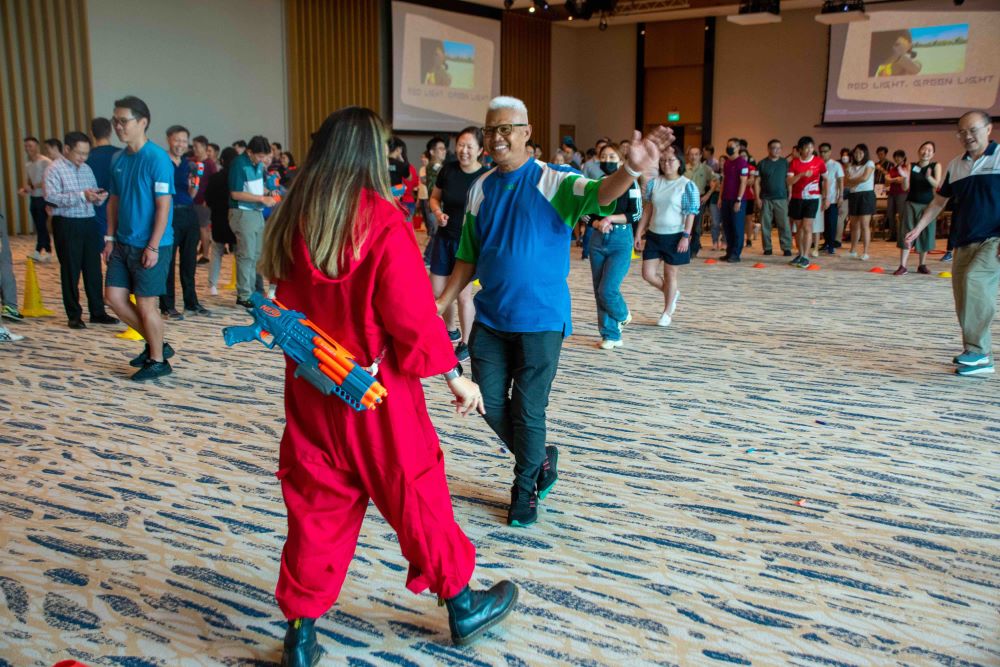THE ART OF BUILDING BRIDGES ACROSS GENERATIONS THROUGH TEAM BUILDING
In today’s diverse workforce, one of the most significant challenges faced by organizations is bridging the generation gap among employees. With Baby Boomers, Generation X, Millennials, and Generation Z all working side by side, each generation brings its unique perspectives, communication styles, and work preferences to the table. While generational diversity can enrich teams with a wide range of skills and experiences, it can also lead to misunderstandings, miscommunication, and conflicts if not addressed effectively.
Team building across generations is essential for fostering collaboration, enhancing productivity, and promoting a positive work environment where all employees feel valued and respected. By acknowledging and embracing the differences between generations while focusing on common goals and shared values, organizations can bridge the generation gap and build cohesive, high-performing teams.
Understanding Generational Differences
The first step in bridging the generation gap is understanding the unique characteristics and preferences of each generation in the workforce:
-
Baby Boomers (born 1946-1964): Baby Boomers value hard work, loyalty, and face-to-face communication. They often prefer hierarchical structures and traditional leadership styles.
-
Generation X (born 1965-1980): Generation X values work-life balance, independence, and autonomy. They are adaptable, resourceful, and comfortable with technology but may prefer a hands-off management approach.
-
Millennials (born 1981-1996): Millennials value flexibility, work-life balance, and meaningful work. They are tech-savvy, collaborative, and seek opportunities for growth and development.
-
Generation Z (born 1997-2012): Generation Z values diversity, social responsibility, and authenticity. They are digital natives, entrepreneurial, and prefer communication through social media and instant messaging.
Building Bridges Through Team Building
Team building activities tailored to bridge the generation gap can help foster understanding, communication, and collaboration among employees from different generations. Here are some strategies for effective team building across generations:
-
Mix and Match Teams: Create cross-generational teams for projects and initiatives to encourage interaction and collaboration between employees from different generations. This allows team members to learn from each other’s strengths, experiences, and perspectives.
-
Reverse Mentoring Programs: Implement reverse mentoring programs where younger employees mentor older employees on technology, social media, and other relevant skills, while older employees mentor younger employees on leadership, decision-making, and industry knowledge.
-
Multigenerational Learning Sessions: Organize workshops or training sessions that focus on generational diversity in the workplace. Provide education and insights into the characteristics, preferences, and communication styles of each generation to foster understanding and empathy among team members.
-
Flexible Work Arrangements: Offer flexible work arrangements, such as remote work options or flexible hours, to accommodate the diverse work preferences and lifestyles of employees from different generations. This demonstrates organizational flexibility and respect for individual needs.
-
Rotate Leadership Roles: Encourage employees from different generations to take on leadership roles and responsibilities within teams. By rotating leadership roles, organizations can leverage the diverse leadership styles and strengths of employees from different generations.
-
Celebrate Diversity: Recognize and celebrate the diverse backgrounds, experiences, and contributions of employees from all generations. Organize team-building events, social gatherings, or appreciation days that highlight the value of generational diversity in the workplace.
Conclusion
Bridging the generation gap through team building is crucial for creating inclusive, collaborative, and high-performing teams in today’s multigenerational workforce. By understanding generational differences, embracing diversity, and implementing effective team-building strategies, organizations can harness the collective strengths and talents of employees from all generations to drive innovation, productivity, and success.
In conclusion, team building across generations is not about erasing differences but about leveraging them to create stronger, more resilient teams. By fostering a culture of respect, understanding, and collaboration, organizations can bridge the generation gap and build a workplace where employees of all ages feel valued, engaged, and empowered to contribute their best.

